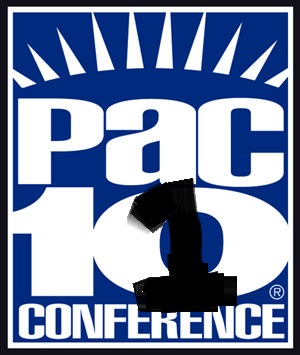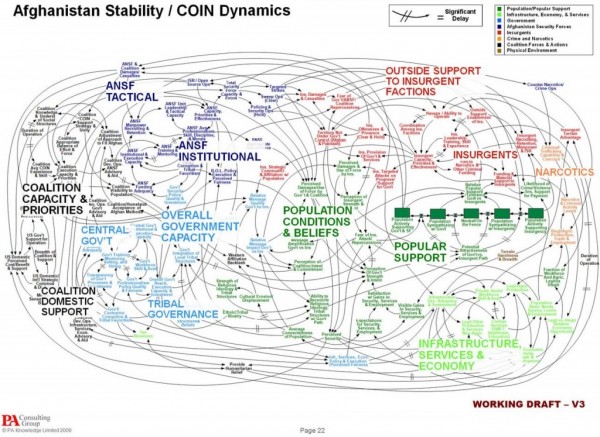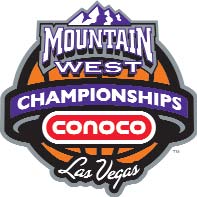Making Sense of the Mountain West/WAC Debacle
Posted by rtmsf on August 21st, 2010Andrew Murawa is the RTC correspondent for the Mountain West and Pac-10 Conferences and an occasional contributor.
When last we left the BYU-instigated MWC/WAC soap opera, the Cougars’ plans to escape the MWC in favor of football independence and a WAC home for all other sports had been thwarted by Fresno State and Nevada’s decisions to leave the WAC for the MWC, leaving the six remaining WAC schools twisting in the wind and BYU, although still a desirable quanitity, undecided as to where it would wind up. In the days since, some of the details of the MWC-induced defections have surfaced, some new rumors have arisen and the futures of the WAC and BYU remain undecided. And so, a recap of the events and whispers of the last few days:
- Thursday morning, WAC commissioner Karl Benson gave his first public comments on the Fresno State and Nevada decisions to leave the conference, and he promptly blasted them, saying that their decisions were “selfish acts” that left the conference’s future very much in doubt. He also clarified that Nevada president Milt Glick did not, in fact, sign the agreement that would have levied a $5 million penalty on the institution for leaving the conference, but did give a verbal agreement to the proposition, and Benson expects that the verbal agreement will be binding. Fresno State’s president John Welty, along with the presidents of the other six WAC institutions, signed the agreement. According to Benson, the two institutions will have to pay up within 60 days. Furthermore, because both schools missed the July 1 deadline for filing to leave the WAC, they will be expected to play the next two seasons in the conference before heading to the Mountain West.
- It also came out on Thursday that Utah State had also been invited to join the MWC, but had turned it down, partially due to the $5 million buyout and in part because they wanted to be in the same conference as BYU. Since then, it has been reported that Utah State is again in negotiations with the MWC about possible membership, and since Nevada and Fresno State have already left the WAC, the $5 million buyout penalty is no longer in effect. If Utah State winds up leaving the WAC, it will likely be the final nail in the coffin, as the WAC needs six members who have been together for five continuous years in order to retain its automatic bid to the NCAA Tournament. If USU leaves, the WAC would be down to five teams, and it would be the next little domino that would push the remaining WAC schools to plan a different future.
- While Utah State looks to take care of itself, Hawai’i is contemplating its own future sans the WAC, and that future may include independence, football-wise. Given the difficult travel logistics in scheduling Hawai’i, they may be better off scheduling a combination of road guarantee-games, a handful of home-and-home series and several games at the ends of seasons welcoming BCS squads as sort of a pre-Bowl bowl game. For other sports, including basketball, Hawai’i is considering perhaps joining a conference like the WCC, although the attractiveness of adding such a geographic outlier to any smaller conference is very much in question.
- If, by some stroke of luck, the WAC is able to keep all six of its remaining institutions on board (and about the only reasonable selling point they have now is that they could split the $10 million that may be owed by Fresno State and Nevada among the remaining teams), the WAC is still looking at taking a huge step backwards. With very few desirable FBS football schools in the west as potential targets for the conference, among the schools being discussed as possible additions to the conference are names like Cal Poly, UC Davis, Sacramento State, Texas State and Texas-San Antonio, none of whom have been major factors in Division I men’s basketball.
- The biggest outstanding question in all of this mess is at BYU: after triggering this landslide, where exactly do they wind up? Commissioner Benson remains hopeful that BYU will still be coming to the WAC, but at this point that is little more than wishful thinking – there is absolutely no reason for BYU to take its non-football sports to that mess anymore. If football independence is still on the table, the only way that will happen is if BYU agrees to join the WCC for its non-football sports, however BYU has very little in common with the schools in that conference. While all of those WCC schools are religious schools, they are all also very small schools, but BYU has an enrollment of more than 30,000 students. In the end, while nothing is set in stone yet, MWC officials have become more and more confident over the past few days that BYU will wind up back in the MWC, at least until it comes up with a better plan a few years down the road.
- One interesting rumor that has been bandied about the past couple of days has been a potential MWC/Conference USA agreement to join forces in some as yet undetermined way. Among the possibilities discussed have been a full merger of the two leagues (23 teams), a combination of the most-desirable teams into something like a 20-team league, an alliance between the two leagues resulting in a championship game between the two conferences with the winner of that game earning a BCS bid, or simply a scheduling alliance between the two conferences. At this point, all of this is conjecture, but there was a “strategic” meeting between officials from both conferences on Thursday, although MWC commissioner Craig Thompson claimed that it was a previously planned meeting that had nothing to do with the events of the previous days. This claim that should be taken with a grain of salt, given that Thompson also suggested this week that the invitations of Fresno State and Nevada to join the MWC had nothing to do with the rumors of BYU’s plans to leave for the WAC.
So, while there is plenty still to be sorted out here, we presently stand with a Mountain West Conference that looks like this (or at least will look like this in 2012): Air Force, Boise State, BYU, Colorado State, Fresno State, Nevada, New Mexico, San Diego State, TCU, UNLV and Wyoming, with the possibility that the addition of Utah State (bringing the conference to 12 teams) will create a very strong basketball conference of relatively like-minded institutions all reasonably well geographically suited to one another. The fact that the football side of the conference looks solid as well is just an ancillary bonus (at least to this basketball-minded blog). However, even if BYU slinks back to the MWC for a few additional years, they are still very much the squeaky wheel here, unsatisfied with their current crowd. While having their own dedicated cable network, The MTN, is a plus for the conference, there is still the feeling that relying solely on that channel, plus a handful of games on CBS College Sports Network and Versus, the conference is leaving money on the table. However, that television contract is going nowhere soon, as it runs through the 2015-16 season. At some point, BYU is going to find a more suitable partner for its plans, and when that happens, the MWC will be saying goodbye to BYU all over again, this time for good.



















































